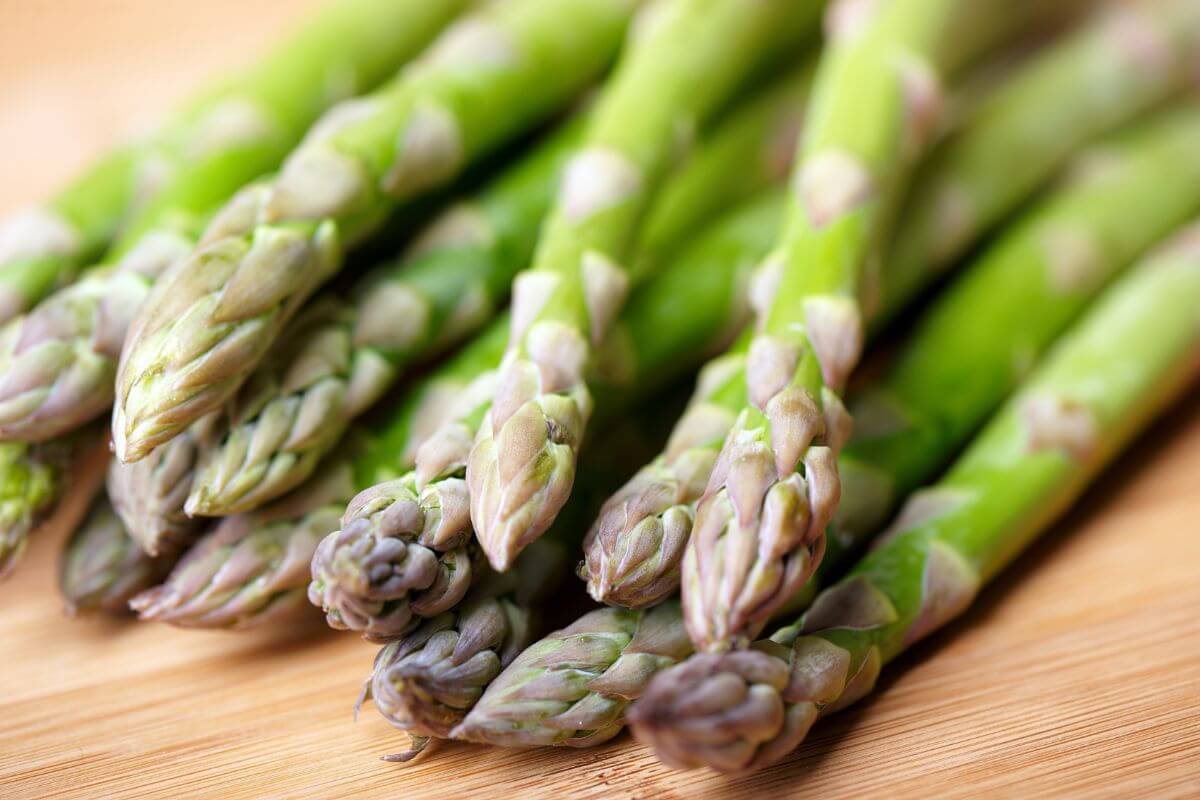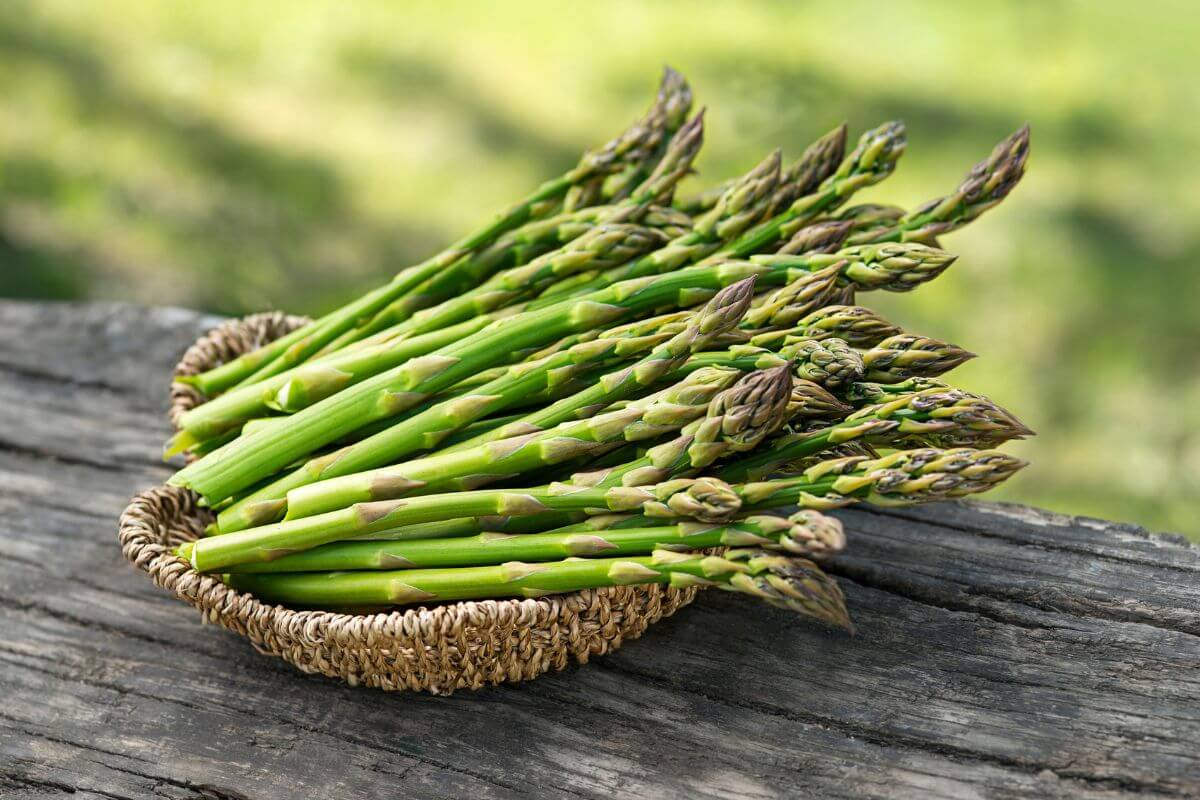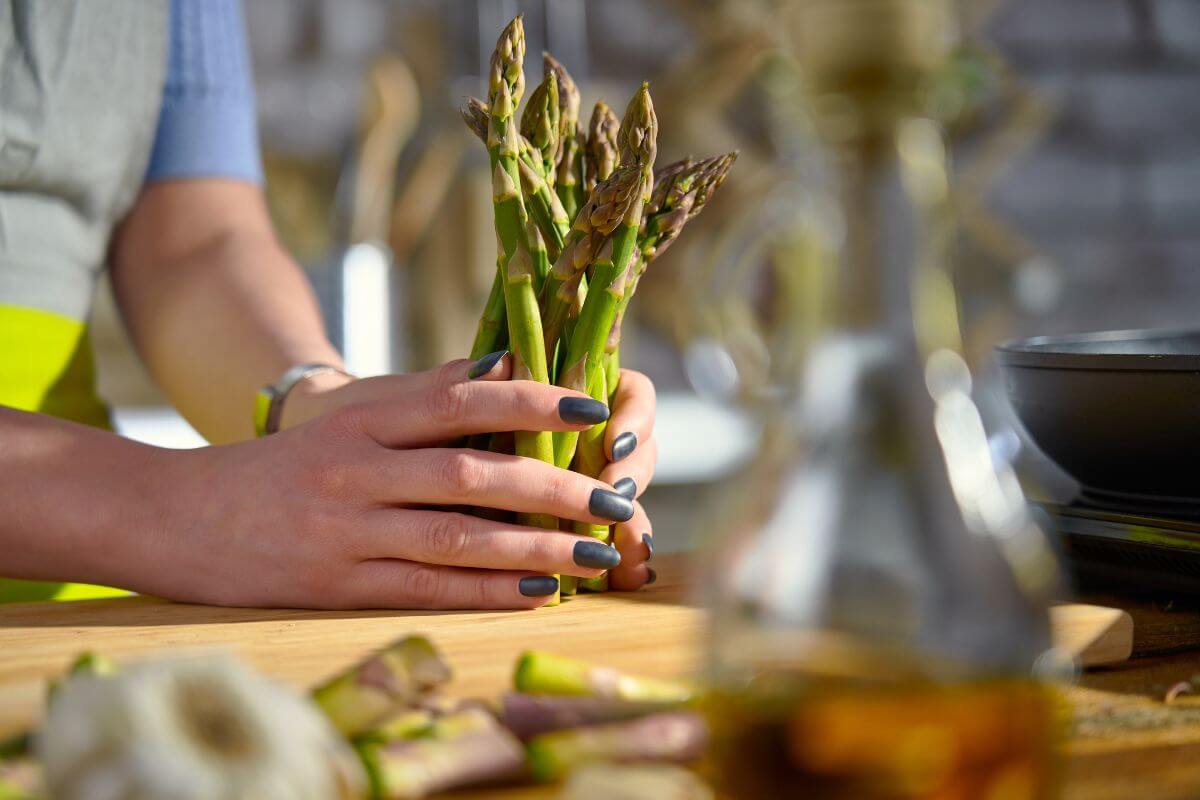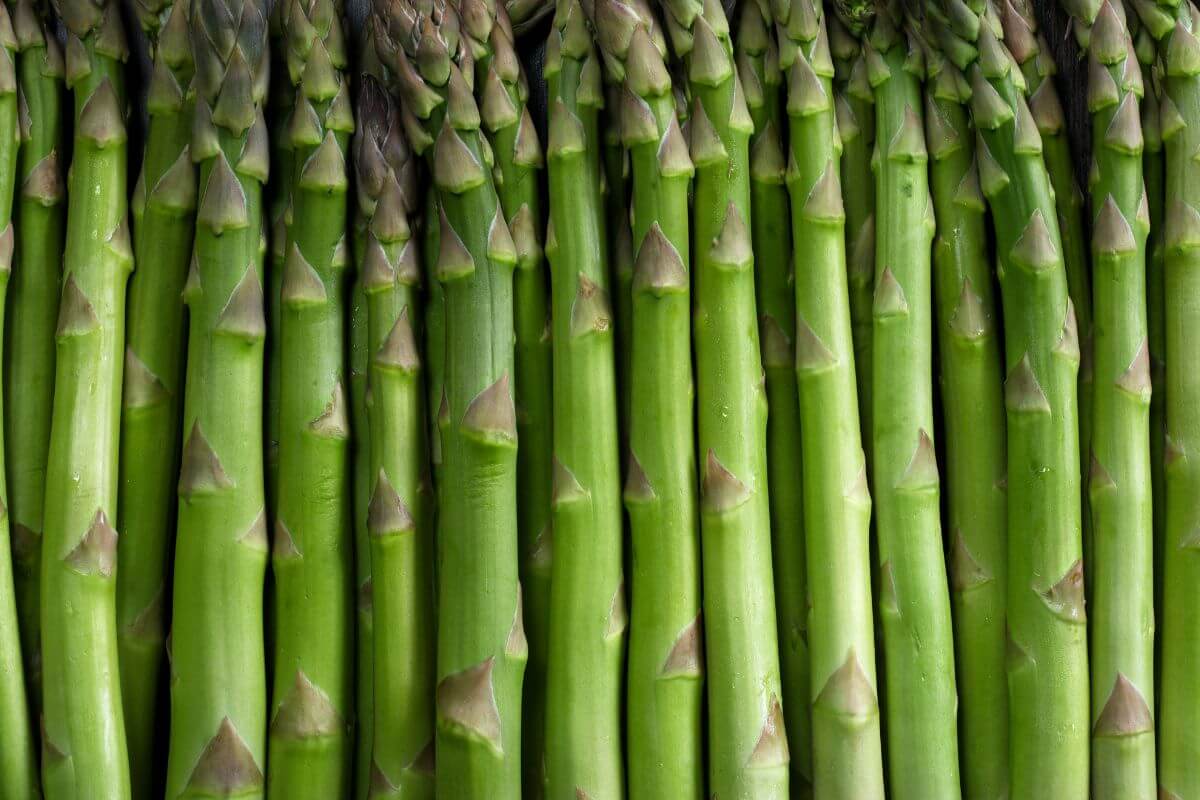Have you ever wondered, is asparagus man-made or if it was a product of mother nature? Well, the majority of asparagus that we buy in the supermarket is man-made like other fruits and vegetables.
This article will cover how asparagus is man-made, but has also evolved as a genetically modified asparagus.
Asparagus Overview – A Gift from Mother Nature

The asparagus plant is a perennial that can produce for years and years, so it can continue to live beyond its producing years.
Unique among garden plants, this perennial has two kinds of plants: one kind will have male staminate flowers, while others will feature female pistillate blooms with small red fruit that have seeds. For asparagus to reproduce, pollinators must visit both male and female flowers.
The asparagus genus boasts as many as three hundred species. This woody vegetable can be either a stand-up plant or a climbing plant.
Roots can be rhizome-like or tuberous, while above-ground foliage is feathery in appearance.
The vegetable asparagus is available in the well-loved green, as well as white and purple exemplars. While white and green asparagus taste the same, asparagus remains white when spears have no access to sunlight. It is not genetically modified in any way to remain white.
Purple asparagus is cultivated in Albenga, Italy, and is a very sweet and tender variety that is often consumed raw. Today, however, most commercially sold asparagus is grown in China.
History of Asparagus

A member of the Asparagaceae family, the Asparagus Officinalis, is a distant relative of the onion. It has been appreciated and consumed for at least 2000, if not 3000 years.
A native of the Mediterranean region, several wild varieties have been discovered in Africa. Evidence of asparagus has been found in Egyptian, Greek, Persian, and Roman societies.
Ancient Greece elevated the asparagus, holding it to be sacred with aphrodisiacal properties. The Greek medical doctor Hippocrates used wild asparagus in his treatment of urethra and diarrhea problems. It was used extensively for numerous medicinal purposes, including for its diuretic capabilities.
The ancient Romans cultivated asparagus and consumed asparagus as part of their daily diet with Caesar eventually bringing it to Europe. It was not only eaten fresh in season, but dried for consumption in the off-seasons. Dried asparagus was boiled for use. While it lost some favor in the Middle Ages, the Arabs did continue its cultivation.
In the 16th century, Asparagus made its entrance into Europe’s royal courts, yet it wasn’t until the 18th century that it finally entered the common marketplace and common man’s diet. Cultivated extensively in the area of the Mediterranean, Italy, Greece, Spain, and North Africa all became cultivation hubs.
Today in the United States, Oceana County, Michigan proclaimed themselves the “asparagus capital of the world” and hosts annual festivals for asparagus.
Selective Breeding of Asparagus

Asparagus is considered “man-made” through the process of selective breeding. It was bred to improve specific characteristics like its size and taste.
Historically, farmers would take the best selections from a harvest and breed them together or with other plants with similar traits for a better, stronger, healthier, and tastier fruit or vegetable. Selective breeding has also been used to increase the amount of produce a crop can yield.
The first asparagus, as with all vegetables, was discovered in the wild, a product of Mother Nature’s genius and generosity.
Wild asparagus is characterized by shoots that are exceptionally thin, so it will appear differently than the asparagus found in grocery stores.
Thanks to progress in agricultural instruments, technology, cultivation methods, and selective breeding, the asparagus plant now boasts a thicker stem with many more edible vegetables to enjoy.
How does selective breeding work? Seeds, cuttings, layering, and grafting can be used as techniques for selective breeding.
Farmers will select two asparagus plants as parent plants to cultivate. When the offspring arrive, they will select two new parent plants with the best traits from among the new plants, breed them again, and continue this process for generation after generation.
In fact, it is “generation after generation” that truly defines selective breeding. It can require decades, centuries, or even thousands of years to obtain the desired result.
The asparagus traits that farmers prioritize in selective breeding:
- Plant size
- Taste
- Disease resistance
- Climatic condition resistance
- Crop yields
How does an asparagus plant transfer specific traits? Like humans and animals, characteristics are inherited from parent plants through the DNA molecule found in every cell.
DNA is a kind of instruction manual for cell activity. The asparagus offspring will inherit one-half of their genes from each parent plant. Then the cultivation environment will also influence traits.
Selective breeding, however, does have its limitations. Generally speaking, a specific trait can be bred into a plant if it is already characteristic of the species, thus limiting selective breeding to genetic variations that already exist.
This aspect of selective breeding makes genetic diversity in nature vital. For example, characteristics of wild varieties of plants can be bred with agricultural crops to improve resistance to climate change.
In the end, even with inherited characteristics, selective breeding still requires a great deal of time because it takes place over numerous generations of a plant family.
Genetically Modified Asparagus

Even though asparagus has been selectively bred for centuries, there are still genetically modified asparagus.
Modern genetics can allow farmers to identify genes that directly relate to specific traits. These genes can be followed in a plant’s offspring. Thanks to this new technology, farmers can decide which genes are desirable, and contrary to the past, they no longer need to wait until a plant has matured to verify results.
Today, it’s possible to produce asparagus with specific characteristics. This is known as GMO or Genetically Modified Organisms.
There is still much debate as to the safety of eating GMO foods. Nonetheless, there are risks with genetic engineering. Insects that are initially resisted thanks to genetic engineering may evolve in such a manner as to override GO pest resistance, making their future control difficult.
GMOs might also compete with wild plants for resources, reducing nature’s biodiversity as well as interbreeding with wild plants, transferring modified genetic material, making all plants GMOs to some degree in the future.
Man-Made Asparagus Final Thoughts
Selective breeding undoubtedly contributed to today’s asparagus, but it is thanks to man’s continued intervention throughout history that our asparagus today is as large and fleshy as it is tasty.
Learn more about other man-made vegetables and fruits:

